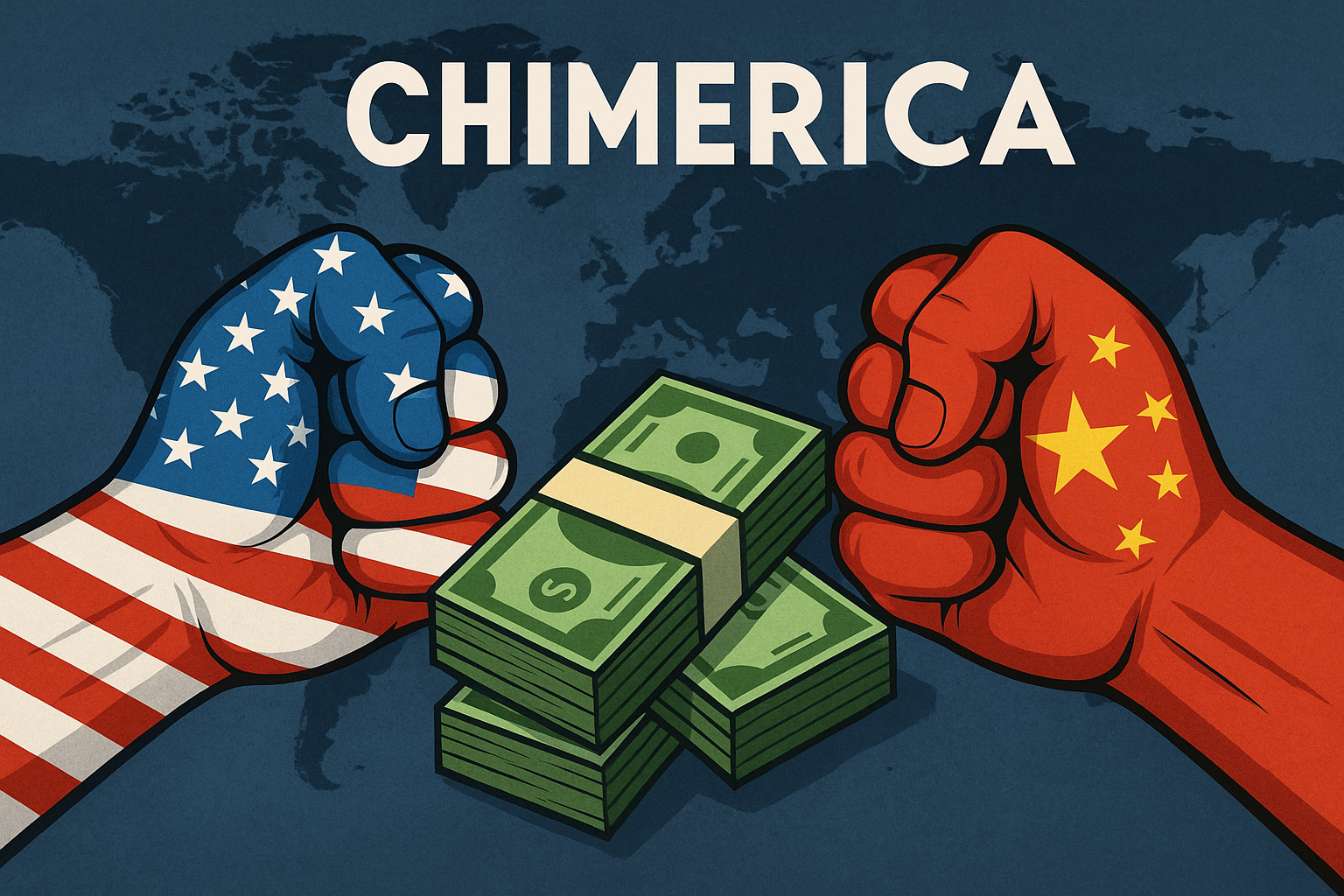The term “Chimerica” was coined by historian Niall Ferguson and economist Moritz Schularick in 2007 to describe the symbiotic economic relationship between China and the United States in the early 21st century. This alliance fueled global growth but also sowed the seeds of financial instability and geopolitical tension.
This blog explores:
✔ What was Chimerica?
✔ How it shaped the global economy
✔ Why it collapsed
✔ What comes next?
1. The Chimerica Model: How It Worked
Chimerica was an unwritten economic pact where:
- China produced cheap goods (electronics, textiles) and lent money to the U.S.
- America consumed Chinese exports and ran massive trade deficits
- China recycled its trade surplus into U.S. Treasury bonds, keeping U.S. interest rates low
Key Features
✅ “Savings Glut” (China) + Consumption Boom (U.S.)
✅ Cheap Chinese labor = Low inflation in the West
✅ Dollar dominance reinforced by China’s forex reserves
Example: By 2008, China held $1.4 trillion in U.S. debt, funding America’s housing bubble.
2. Why Chimerica Was a Double-Edged Sword
Benefits
✔ Global Growth Engine (2001-2008):
- China’s GDP grew 10%+ annually
- U.S. consumers enjoyed cheap imports (Walmart, iPhones)
✔ Stabilized Global Finance:
- China’s dollar purchases propped up the U.S. economy
Flaws
❌ U.S. Debt Addiction:
- Low interest rates fueled reckless borrowing (subprime crisis)
❌ Chinese Overproduction:
- Factories relied on Western demand, leading to overcapacity
❌ Geopolitical Tensions:
- U.S. blamed China for job losses (e.g., Rust Belt decline)
3. The Collapse of Chimerica (2008-2020)
2008 Financial Crisis: The First Crack
- U.S. housing crash exposed Chimerica’s fragility
- China responded with a $586B stimulus, but this worsened debt and overcapacity
Trump’s Trade War (2018-2020)
- Tariffs on $360B of Chinese goods
- Tech decoupling (Huawei bans, semiconductor restrictions)
COVID-19 & Supply Chain Shocks
- Globalization unraveled as U.S. sought “onshoring”
- China shifted to “dual circulation” (less export dependence)
Result: By 2023, U.S.-China trade fell 17% (Bloomberg).
4. What Replaced Chimerica?
1. U.S. “Friendshoring” (Alliances Over China)
- Chips Act ($52B for U.S. semiconductor production)
- IPEF (Indo-Pacific Economic Framework)
2. China’s “Wolf Warrior” Diplomacy
- Belt & Road Initiative (BRI) as an alternative to Western markets
- Yuan internationalization to reduce dollar dependence
3. The New Cold War
- Tech wars (AI, 5G, quantum computing)
- Military tensions (Taiwan, South China Sea)
5. The Future: Is Chimerica Dead?
- Partial Decoupling: Some sectors (tech, defense) will split, but consumer trade remains
- Multipolar World: EU, India, ASEAN gain as U.S.-China rift deepens
- Climate Cooperation? The only potential lifeline for U.S.-China ties
“Chimerica was a marriage of convenience—until the costs outweighed the benefits.”
(Sources: Niall Ferguson, IMF, Bloomberg, U.S. Treasury)

